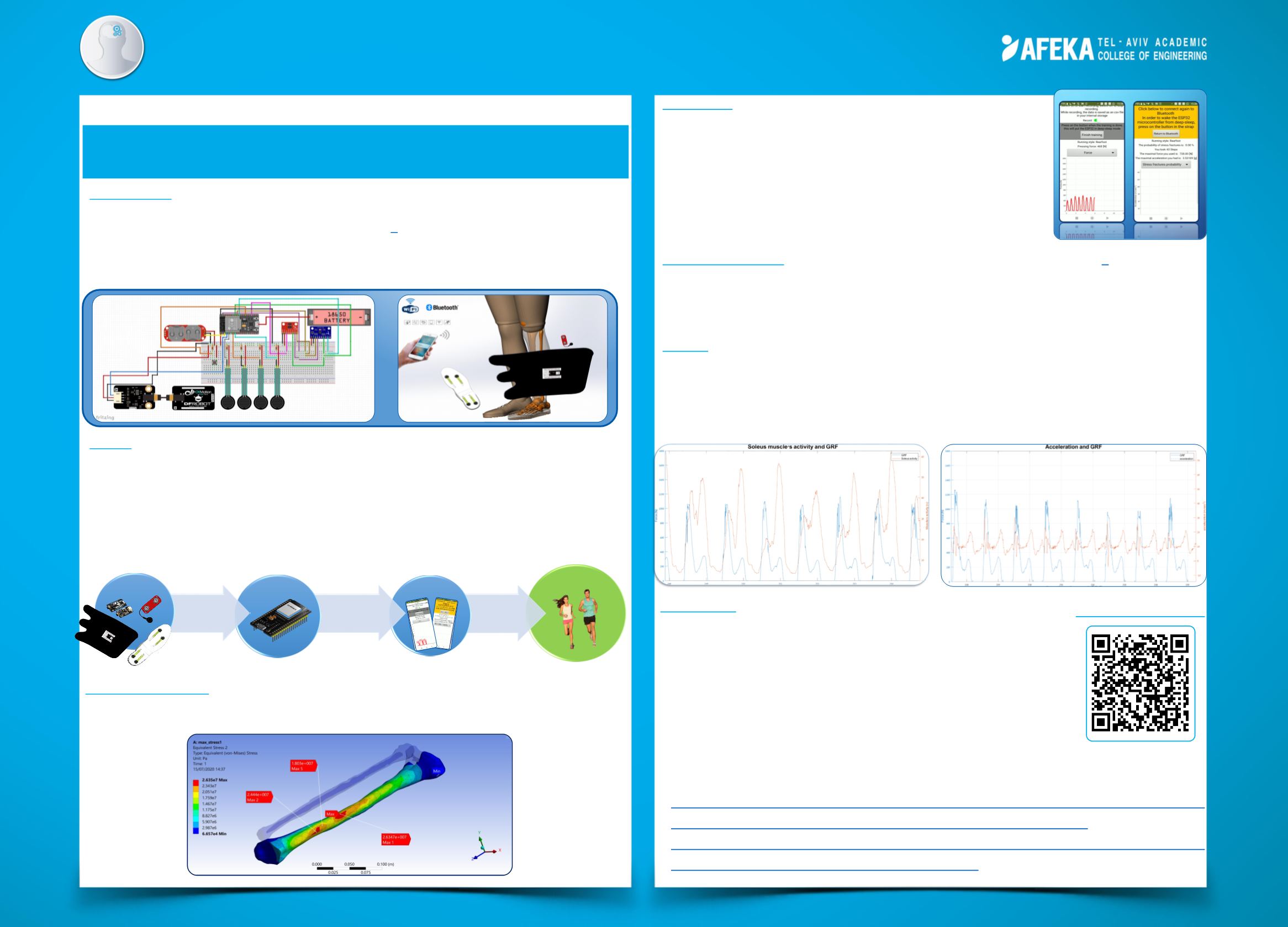

Early detection of stress fractures in the tibia
Introduction –
Stress fractures are a common injury among athletes and soldiers. Stress
fractures occur when a bone is loaded frequently with large loads, this results in micro-cracks
within the bone, which in turn grow to macro-cracks
[ 1 ]. When macro-cracks occur, the person
cannot return to normal activities. As of today, there is no way of preventing stress fractures
before the formation of macro-cracks. This project aims to change that, and provide a cheap, yet
reliable device which could predict and prevent stress fractures, with good accuracy.
Design
– Our solution includes a smart insole with integrated pressure sensors and
accelerometer & gyroscope. A smart strap is wrapped around the user’s leg, on the strap there
are a breadboard with an accelerometer & gyroscope, a push-button and the micro-controller
which is the processing center, powered by batteries. In addition, near the strap there are 2
EMG sensors located on 2 important muscles on the user’s leg. The smart wearables send data
to the processing center, which calculates the probability of stress fractures via an algorithm.
The processing center sends the data via Bluetooth to a dedicated Android application, which
purpose will be discussed later.
Aviel Eliyahu & Idan Galilee
Instructor : Mr. Assaf Gur
Medical Engineering
This project presents a device which can predict and prevent
stress fractures among soldiers and athletes
Simulation software -
In order to verify the theory about critical areas of stress fractures, we
used 3D modeling to study and estimate the stresses and strains in the tibia in physiological
conditions. The analysis was performed using ANSYS software.
Reference
1. Jacob C. Mandell et al. Stress fractures of the foot and ankle, part 1: biomechanics of bone and principles of imaging and treatment, Skeletal Radiol (2017) 46:1021–1029. 2. David Taylor et al. Predicting stress fractures using a probabilistic model of damage, repair and adaptation, Journal of Orthopaedic Research 22 (2004)User
•
Data storage &
visualization
App
•
Data processing
•
Sending data via
Bluetooth
ESP32
•
Smart strap
•
Smart insole
•
2 EMG sensors
Sensors
Results-
The results below show the acceleration, the Ground Reaction Force (GRF) and soleus
muscle’s activity. With agreements to the data in the literature, the GRF rises when user step on
the ground and at the initial contact with ground a shock wave passes through which results in
an increased tibial acceleration. The soleus muscle shows a delay between the electric activity to
the actual force generation ,which is due to the electric mechanical delay in the muscle.
When the user lifts his legs, the soleus muscle is active, and the GRF decreases.
Conclusions -
Since the obtained data from the sensors on the strap and
insole is valid, and we use the conventual bio-mechanical calculation,
the stress in the tibia is obtain properly and our algorithm can predict
stress fractures, and thus help in preventing them.
The collected data can be used to assess the user’s performance and
help doctors receive better diagnosis is case of an injury.
The system is a low-cost device suitable for military needs, sport clubs,
athletes in various activities and for private clients.
A demonstration of the system can be seen from scanning the QR code
on the right.
Application-
This app was built by using "MIT App Inventor 2“. The
app receives data from the user, calibrates the sensors and with the
press of a button starts collecting values from the sensors while the
user can define which data will be displayed. Furthermore, the app
can save the obtained data on the smartphone's memory and
extract it to an excel file, which could be used to examine the user's
activity, and look for abnormalities. At the end of a session, a
summary is presented as well as the probability for stress fractures,
as can be seen in the picture to the right.
Predicting algorithm-
The suggested algorithm is adapted from the literature
[ 2 ]. The algorithm
calculates the damage that the bone has suffered (the tibial stress, which is calculated for every
step) and the bone’s repair mechanism to estimate the probability of stress fractures. This
probability is stress and time dependent and changes with the intensity of the training. The user
gets his probability to develop stress fractures after every session.
Project demonstration
















